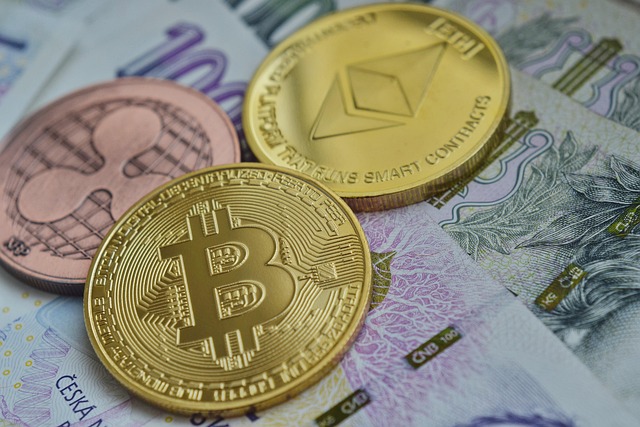What Time Does XRP Market Open: A Complete Trading Guide
Author: Jameson Richman Expert
Published On: 2025-10-25
Prepared by Jameson Richman and our team of experts with over a decade of experience in cryptocurrency and digital asset analysis. Learn more about us.
What time does XRP market open is one of the most common questions traders ask when planning entries, managing liquidity and timing news-driven moves. In short: spot XRP trading is available 24/7 on major cryptocurrency exchanges, but practical “open” times, fiat on/off ramps, funding windows, exchange maintenance, and regional liquidity patterns create meaningful daily rhythms. This article explains the technical truth, the practical nuances, exchange examples, best windows to trade, and an actionable checklist so you can trade XRP with confidence.

Quick answer: When does the XRP market open?
Unlike stock markets, XRP’s spot market does not have a single daily opening bell. Most centralized and decentralized exchanges list XRP for trading around the clock (24 hours a day, 7 days a week). However, the effective market environment changes during the day because of:
- Fiat deposit/withdrawal hours (banking hours)
- Exchange maintenance or scheduled downtimes
- Futures funding payment windows
- Regional liquidity shifts (Asian, European, North American sessions)
- News or regulatory events that concentrate volume
Why traders still ask “what time does XRP market open”
There are several reasons the question matters:
- Fiat access: If you need to buy XRP with USD, EUR, JPY, etc., bank and payment processing hours affect when you can fund an account and get exposure.
- Liquidity: Order books get deeper during overlaps between major trading regions, which affects slippage and execution quality.
- Futures and derivatives: Funding payments and settlement windows can produce predictable short-term moves.
- Planned maintenance: Exchanges occasionally pause trading or withdrawals; knowing those times helps you avoid being stuck during volatile moves.
Exchange examples and practical opening/maintenance details
Below are specific notes on some of the most popular exchanges (spot and derivatives). Links to registration pages are included if you want to create accounts quickly.
Binance — 24/7 spot, periodic maintenance
Binance lists XRP for spot trading 24/7. The platform also runs futures and perpetual contracts that trade continuously; funding payments typically happen every 8 hours on many pairs and exchanges (check contract specs). Binance performs occasional maintenance or updates; these are announced in advance.
If you’re interested in details about margin and futures costs, see an in-depth explanation of fees and fee structure: Binance futures fees explained.
Register at Binance (affiliate link): Open a Binance account.
Coinbase / Coinbase Pro — 24/7 with fiat gateway constraints
Coinbase lists XRP (availability varies by jurisdiction) and operates 24/7 for crypto trading. However, fiat deposits and withdrawals follow bank processing hours, which means converting USD or EUR to XRP may face delays outside banking hours. See Coinbase support pages for country-specific details (official support) and check if XRP is available in your jurisdiction.
Kraken / Bitstamp / Bitfinex — 24/7 crypto markets, fiat differences
These regulated exchanges provide 24/7 spot trading for most crypto pairs. Again, fiat rails (ACH, SEPA, wire) run on business days and may delay enabling or exiting positions that require fiat conversion.
Bybit, Bitget, MEXC — derivatives and perpetuals
Derivatives exchanges such as Bybit, Bitget, and MEXC operate continuous trading for perpetual contracts on XRP. These platforms maintain funding intervals (often every 8 hours) that can cause short-term price pressure near funding times. If you want to sign up:
- Bybit registration (affiliate): Join Bybit
- Bitget registration (affiliate): Join Bitget
- MEXC registration (affiliate): Join MEXC
Know the product specs and funding schedule before trading leveraged XRP products. Each exchange lists the contract specifications and maintenance windows on their support pages.
Decentralized exchanges and the XRP Ledger
Decentralized exchanges (DEXs) for assets on the XRP Ledger are theoretically always available if the underlying ledger and nodes are operational. For more on the XRP Ledger itself (technical and governance info), the official XRPL documentation is an excellent resource: XRPL.org. For general background, see the XRP Wikipedia page.

When is the best time to trade XRP? (Liquidity and volatility windows)
While trading is available 24/7, liquidity and volatility fluctuate across UTC time zones. Use these patterns to time entries and manage slippage:
- Asian session (00:00–08:00 UTC): Lower liquidity for USD pairs, higher activity for JPY and some Asian stablecoins.
- European session (07:00–16:00 UTC): Liquidity increases as European fiat markets open, especially for EUR pairs.
- North American session (13:00–21:00 UTC): High liquidity for USD pairs; often the most active period when US volume combines with Europe’s tail.
- Session overlaps (13:00–16:00 UTC): The overlap between European and North American trading sessions often produces the deepest order books and best execution environment for large orders.
Example: If you want to minimize slippage on a large XRP buy using USD order books, placing trades during the 13:00–16:00 UTC overlap often reduces market impact.
Futures funding payments, settlement, and how they affect XRP price
Perpetual futures on many exchanges include periodic funding payments paid between longs and shorts. These funding events are predictable and can cause concentrated volatility. Typical funding cadence:
- Funding every 8 hours on many major exchanges (check your exchange’s contract details).
- Funding rates can be positive or negative; when they’re high, traders may arbitrage between spot and perp markets, producing price pressure.
Before trading leveraged XRP positions, check the funding schedule and historic funding rate—this is critical for planning entries and avoiding unexpected funding costs.
Maintenance windows and emergency downtimes — a practical watchlist
Exchanges occasionally schedule maintenance. To avoid being unable to exit or enter a position during volatility, do the following:
- Subscribe to exchange system status updates (email, Telegram, or status page).
- Check withdrawal and deposit processing times if you plan to move fiat in/out.
- Keep a small allocation on platforms where you trade actively so you can respond to market moves without needing fiat rails.
Official status pages are authoritative; for example, Binance’s maintenance notices are posted on its support pages and in the platform announcements area.

Common misconceptions about crypto market “open” and “close”
- Misconception: Crypto markets sleep. Reality: The infrastructure runs continuously; however, human liquidity and banking pipelines create daily rhythms.
- Misconception: All exchanges have identical price at any moment. Reality: Price differences and arbitrage opportunities exist, especially on lower-liquidity pairs and region-specific exchanges.
- Misconception: Funding costs don’t matter for spot traders. Reality: Funding influences the basis between spot and perpetual prices and can produce short-term squeezes that affect spot order books.
Actionable trading checklist before entering an XRP trade
Use this checklist to reduce operational risk:
- Confirm exchange status and scheduled maintenance.
- Verify fiat deposit/withdrawal windows if you’ll be entering/exiting via bank transfers.
- Check order book depth for your intended size to estimate slippage.
- Review funding rates if you plan to trade perpetuals; set risk limits for funding payments.
- Place limit orders to control execution price where possible; use market orders sparingly in thin books.
- Set stop-loss and size your position according to risk management rules (e.g., risk no more than 1–2% of capital per trade unless part of a pre-approved plan).
- Keep emergency access (2FA, backup keys) ready to avoid being locked out during fast markets.
How fiat banking hours affect the effective “open” of the market for many traders
If you plan to purchase XRP using bank transfers or fiat on/off ramps, note:
- Banking hours can delay deposits—ACH, SEPA, and wires often only process on business days.
- Payment processors and fiat payment providers have cut-off times and holidays that affect when deposits appear in your exchange account.
- Stablecoin purchases via credit card or instant fiat on-ramps are faster but often more expensive due to fees and limits.
In practice: while the crypto market itself is open, your ability to access it with fiat might effectively be limited to bank business hours.

Example trading scenarios
Here are a few concrete scenarios to illustrate how “what time does XRP market open” matters in applied trading:
Scenario A — Quick entry using USD during the North American session
You want to buy a large amount of XRP with USD and avoid slippage. Plan to trade during 13:00–16:00 UTC when US and European liquidity overlap. Fund your exchange account the business day prior so funds are settled and ready.
Scenario B — Leveraged trade around funding window
If you hold a perpetual long position before a funding timestamp and the funding rate is strongly positive, you could be paying regular fees to short-hedged counterparties. Some traders close or reduce positions before funding windows to avoid the cost; others trade the anticipated price move.
Scenario C — Long-term accumulation across low-volume hours
For dollar-cost averaging (DCA) over weeks or months, the specific hourly liquidity is less critical. However, avoid executing large one-time buys during ultra-low liquidity periods to prevent unnecessary slippage.
Tools and resources to track XRP market availability and timing
- Exchange status pages (Binance, Coinbase, Bybit, Bitget, MEXC) — essential for scheduled maintenance alerts.
- Volume and order book visualizers (TradingView, CoinGlass, CoinMarketCap) — helps identify best liquidity windows.
- XRPL documentation and block explorers for technical confirmations: XRPL.org and the XRP Wikipedia page.
Fees, costs, and further reading
Trading fees, funding payments, and spreads are all practical costs of “opening” a position. For a detailed breakdown of futures fees and fee structure on a major exchange, see this article: Fees — Binance futures explained.
If you’re evaluating where to deploy capital and which crypto assets to consider alongside XRP, this strategic guide explores top picks and timing considerations for 2024: Which crypto to buy today — strategic guide for 2024.
For macro perspective and how XRP fits into broader crypto valuation themes (and to understand Bitcoin’s influence on altcoin cycles), the following price-analysis article is useful reading: Realistic Bitcoin price prediction 2030 — analysis for investors.

How to set up accounts and where to trade XRP
Choose exchanges based on jurisdiction, liquidity, fees, and whether you need fiat rails. Below are some popular options with registration links if you want to get started quickly:
- Binance (global, high liquidity, spot & futures): Register at Binance
- MEXC (range of spot and derivatives products): Register at MEXC
- Bitget (derivatives and copy trading): Register at Bitget
- Bybit (derivatives-focused, perpetuals): Register at Bybit
When registering, enable two-factor authentication (2FA), read contract specs for leveraged products, and verify your identity according to regional requirements.
Risk management and legal/regulatory considerations
Always consider the following:
- Regulatory status: XRP’s status varies by jurisdiction; check your country’s regulations and each exchange’s support for XRP.
- Taxation: Trading activity may incur taxable events when realized; track trades precisely.
- Counterparty risk: Centralized exchanges have custody risk; consider self-custody for long-term holdings.
- Volatility: Crypto instruments can move rapidly—use position sizing and stop-losses aligned with your risk tolerance.
Note: This article is educational and does not constitute financial advice. Consult licensed professionals for personalized guidance.
Putting it together — daily routine for active XRP traders
Here’s a sample daily routine you can adapt:
- Before the trading day: Check exchange status, funding schedule, overnight news, and order book depth.
- Morning (pre-session): Reconcile fiat balances, confirm settlements for planned buys or withdrawals.
- Active trading window (aim for session overlaps): Execute liquidity-sensitive trades, use limit orders for better price control.
- Pre-funding check: Reduce leveraged exposure if funding rates are unfavorable right before a funding timestamp.
- End of day: Review trades, reconcile positions, and plan for the next day.

Summary — practical answer to “what time does XRP market open”
Technically, the XRP market (spot and many derivatives) is open 24/7. Practically, the “open” you should care about depends on:
- Whether you need fiat access (bank hours matter)
- Where you execute trades (exchange maintenance and product specs)
- When liquidity is deepest (session overlaps, typically 13:00–16:00 UTC for US/EU overlap)
- Funding and settlement windows for futures/perpetual contracts
Use exchange status pages and volume heatmaps to time execution, and incorporate the checklist above before placing meaningful orders. For additional reading on fees, market structure implications, and broader crypto selection strategies, check the linked resources above.
Further reading and resources
- XRPL.org — official XRP Ledger documentation
- XRP (Wikipedia) — background and history
- Binance futures fees explained
- Which crypto to buy today — strategic guide for 2024
- Realistic Bitcoin price prediction 2030 — analysis
If you’d like, I can create a personalized schedule (in UTC and your local timezone) for the best times to place large XRP orders, or compare liquidity across a set of exchanges for a particular trading size—tell me your approximate order size and your preferred exchanges and I’ll prepare a tailored plan.